#Commercial vehicle segment
Text
MOONLIGHT CHICKEN – ASSISTANT DIRECTOR AU KORNPROM'S CAMEO (BUT IT'S ACTUALLY A CALLOUT TO MY SCHOOL PRESIDENT)

When Assistant Director Au appeared in Moonlight Chicken as a bubble tea vendor at Ep.5 [2/4] 2.05, it got me wondering whether it was simply the cast and crew having a bit of fun (as with a number of the vendor cameos in Bad Buddy), or whether there was any greater significance (as with GMMTV producers/directors and their cameos in other series before – see this link here).
After all, Au Kornprom Niyomsil is not the director of Moonlight Chicken. But the cameo, while brief and unannounced, reads like a purposeful flourish – Director Aof saved Assistant Director Au's appearance for just a few seconds in the very last half-minute of the scene, so as to maximize the impact of this Aha! moment. This lends the cameo some weight, and I think there is meaning behind it too.
It’s especially significant that the one buying the bubble tea (chaa nom khai mook, or ชานมไข่มุก) is Fourth, in character as teenager Li Ming. And what Li Ming says to Jim at Ep.5 [2/4] 1.57 ("It's not for you") is significant too.
The connection that Fourth and Assistant Director Au have is that the latter is Fourth's director in My School President, which not coincidentally also broadcast its finale the same week as Assistant Director Au's cameo in Moonlight Chicken.
Now MSP is a feelgood vehicle clearly directed at a younger crowd. It's been crafted for maximum teenybopper appeal (does anyone still use this term though? 🤷♂️), with photogenic leads, lots of earcandy songs, cutesy sound effects, gigil/geram-inducing props (that chinchilla hoodie! 😍), uncomplicated storytelling and loads of sweet, affirming moments. All formulaic elements that management and marketing must be beaming at, that are likely to up MSP's money-making popularity in the teen segment and bring in cash from associated sidelines as well (young teens being the most willing to fork out cash for collateral merchandise, or so the current wisdom goes).
I'm not intending to suggest that teens are incapable of appreciating darker, heavier fare, mind you. But I do think the studios are keenest on less demanding, inoffensive output that they can then spin out into all sorts of income streams (music and merchandise being the most obvious, but also concerts and fanmeets as well). This would be logical for any commercial enterprise (which is what they are, after all) but if any among their stable of writers and directors are approaching their work with social consciousness too, well, there are bound to be clashes when pressure mounts to go in a lighter direction.
So to me, MSP is a bit of a rainbow-colored unicorn, a rare confluence of both these drivers (commercial orientation and social conscience, albeit applied with a gentler touch). Underneath its sugary BL theatrics are also positive messages aimed at bolstering the self-esteem and awareness of LGBTQ+ youth still coming to grips with the realities of their identities in cishet-dominated society. That its primary audience is not made up of adults may align nicely with management directives on the commercial front, but it also allows for its underlying message to be targeted as well.
When Li Ming says (a little too smugly) "It's not for you", with MSP's director then handing him the boba, the message is that it's the younger crowd that's being prioritized (not in Moonlight Chicken, ironically, but in My School President).

MSP is especially for teenagers just starting to find their own way in life, not so much older adults who've already figured out (at least partly) who they are and how they fit into society (although everyone is quite welcome to watch along; one message of BL is surely "no gatekeeping" as long as you carry no ill-intent 🥰).
So this is the message of Assistant Director Au's cameo, I think – just as his bubble tea vendor persona is providing teens Li Ming and Heart with a sweet, tasty treat that they will enjoy, as director of MSP (and possibly future projects in the same vein) he's doing much the same thing by delivering a carefully-crafted confection designed to be especially palatable for a younger audience.
And just as bubble tea is known for containing its addictive pearls, teen-oriented BLs like MSP (created by Director Au's hand) will also contain something more substantial for you to chew on within (noting that the word khaimook or pearl also carries the connotation of precious value).

To older folk who might not quite appreciate the offering for what it is (like when Jim says "I don't want it" at Ep.5 [2/4] 1.53) – well, a teen show is not really intended for you anyway (which is the meaning behind Li Ming's retort – he's not just being sassy, although that does have significance for Moonlight Chicken's plot too 😊). Jim's of course welcome to consume it if he wants or likes. But I think his tastes swing toward the more meaty and savory anyway; this is Moonlight Chicken after all. 💖
PS
At the time of writing this, I still hadn't watched Episodes 5 and 6 in full. But this scene was giffed and commented on so much I had to at least watch this bit. I was waiting for Director Aof to put in a cameo too, so this is what I wrote at first:
I think there's a strong chance it will happen. But what will it mean though? 🤷♂️
Well, we now know that it actually happened too, within the same episode! Thanks to @hughungrybear for pointing this out – see this link here. 🥰
I'll save Director Aof's cameo for another post though. I have thoughts about it – something rings ominous about how it was presented, and I'm not sure yet if we should wait for more to be revealed. 🤔
#moonlight chicken#gmmtv cameos#au kornprom niyomsil#fourth nattawat#my school president#aof noppharnach chaiwimol
68 notes
·
View notes
Text
1. There are 300,000 items in the average American home (LA Times).
2. The average size of the American home has nearly tripled in size over the past 50 years (NPR).l
3. And still, 1 out of every 10 Americans rent offsite storage—the fastest growing segment of the commercial real estate industry over the past four decades. (New York Times Magazine).
4. While 25% of people with two-car garages don’t have room to park cars inside them and 32% only have room for one vehicle. (U.S. Department of Energy).
5. The United States has upward of 50,000 storage facilities, more than five times the number of Starbucks. Currently, there is 7.3 square feet of self storage space for every man, woman and child in the nation. Thus, it is physically possible that every American could stand—all at the same time—under the total canopy of self storage roofing (SSA).
6. British research found that the average 10-year-old owns 238 toys but plays with just 12 daily (The Telegraph).
7. 3.1% of the world’s children live in America, but they own 40% of the toys consumed globally (UCLA).
8. The average American woman owns 30 outfits—one for every day of the month. In 1930, that figure was nine (Forbes).
9. The average American family spends $1,700 on clothes annually (Forbes).
10. While the average American throws away 65 pounds of clothing per year (Huffington Post).
11. Nearly half of American households don’t save any money (Business Insider).
12. But our homes have more television sets than people. And those television sets are turned on for more than a third of the day—eight hours, 14 minutes (USA Today).
13. Some reports indicate we consume twice as many material goods today as we did 50 years ago (The Story of Stuff).
14. Currently, the 12 percent of the world’s population that lives in North America and Western Europe account for 60 percent of private consumption spending, while the one-third living in South Asia and sub-Saharan Africa accounts for only 3.2 percent (Worldwatch Institute).
15. Americans donate 1.9% of their income to charitable causes (NCCS/IRS). While 6 billion people worldwide live on less than $13,000/year (National Geographic).
16. Americans spend more on shoes, jewelry, and watches ($100 billion) than on higher education (Psychology Today).
17. Shopping malls outnumber high schools. And 93% of teenage girls rank shopping as their favorite pastime (Affluenza).
18. Women will spend more than eight years of their lives shopping (The Daily Mail).
19. Over the course of our lifetime, we will spend a total of 3,680 hours or 153 days searching for misplaced items. The research found we lose up to nine items every day—or 198,743 in a lifetime. Phones, keys, sunglasses, and paperwork top the list (The Daily Mail).
20. Americans spend $1.2 trillion annually on nonessential goods—in other words, items they do not need (The Wall Street Journal).
21. The $8 billion home organization industry has more than doubled in size since the early 2000’s—growing at a staggering rate of 10% each year.
becomingminimalist.com
12 notes
·
View notes
Text
Russian forces are conducting tactical counterattacks in the Robotyne area as part of their elastic defense against ongoing Ukrainian offensive operations in western Zaporizhia Oblast. The situation south of Robotyne is fluid as some tactically significant field fortifications have changed hands several times. Geolocated footage posted on September 30 shows Ukrainian forces striking Russian troops trying to enter a trench system about 1km southwest of Robotyne near the T0408 Robotyne—Tokmak road. Footage posted on September 13 shows that Ukrainian forces had previously occupied segments of this trench and thus appear to have lost it to Russian counterattacks between September 13 and 30. ISW has recoded this area from Ukraine's counteroffensive to Russian advances.
A Ukrainian soldier analyzed the footage of the area and noted that the aforementioned Russian-controlled trench is a strongpoint in an interconnected system of trenches, firing systems, and dugouts that lie between Robotyne and Novoprokopivka. The Ukrainian soldier noted that the trenches are connected by underground tunnel-like structures and that Russian forces are prioritizing the defense of these positions, which have tactical significance in the area between Robotyne and Novoprokopivka. Geolocated footage posted on October 1 shows Russian forces striking a Ukrainian vehicle just south of the middle of the three trenches and about 1km west of the easternmost trench in the system, suggesting that Ukrainian forces control the easternmost trench and are attempting to push westward to recapture the remaining two trenches and connected dugouts and firing positions. Commercially available satellite imagery indicates that Russian forces destroyed this vehicle between September 25 and 28, indicating that Russian forces repelled a Ukrainian attack and reconsolidated Russian positions near the trench systems in late September. The reported continued presence of Russian forces in the western and central trenches suggests that Russian forces have been conducting successful limited tactical counterattacks south of Robotyne and that the tactical situation in this area is complex and dynamic.
8 notes
·
View notes
Text
Aquatic Robot Market to Eyewitness Huge Growth by 2030
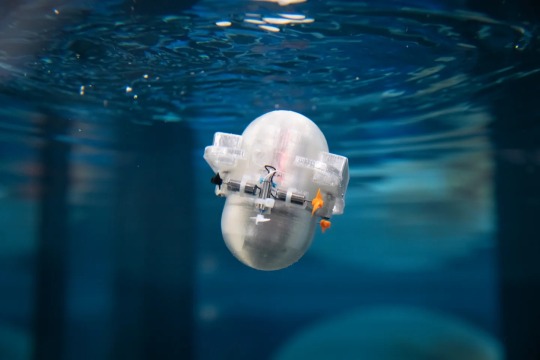
Latest business intelligence report released on Global Aquatic Robot Market, covers different industry elements and growth inclinations that helps in predicting market forecast. The report allows complete assessment of current and future scenario scaling top to bottom investigation about the market size, % share of key and emerging segment, major development, and technological advancements. Also, the statistical survey elaborates detailed commentary on changing market dynamics that includes market growth drivers, roadblocks and challenges, future opportunities, and influencing trends to better understand Aquatic Robot market outlook.
List of Key Players Profiled in the study includes market overview, business strategies, financials, Development activities, Market Share and SWOT analysis:
Atlas Maridan ApS. (Germany), Deep Ocean Engineering Inc. (United States), Bluefin Robotics Corporation (United States), ECA SA (France), International Submarine Engineering Ltd. (Canada), Inuktun Services Ltd. (Canada), Oceaneering International, Inc. (United States), Saab Seaeye (Sweden), Schilling Robotics, LLC (United States), Soil Machine Dynamics Ltd. (United Kingdom)
Download Free Sample PDF Brochure (Including Full TOC, Table & Figures) @ https://www.advancemarketanalytics.com/sample-report/177845-global-aquatic-robot-market
Brief Overview on Aquatic Robot:
Aquatic robots are those that can sail, submerge, or crawl through water. They can be controlled remotely or autonomously. These robots have been regularly utilized for seafloor exploration in recent years. This technology has shown to be advantageous because it gives enhanced data at a lower cost. Because underwater robots are meant to function in tough settings where divers' health and accessibility are jeopardized, continuous ocean surveillance is extended to them. Maritime safety, marine biology, and underwater archaeology all use aquatic robots. They also contribute significantly to the expansion of the offshore industry. Two important factors affecting the market growth are the increased usage of advanced robotics technology in the oil and gas industry, as well as increased spending in defense industries across various countries.
Key Market Trends:
Growth in AUV Segment
Opportunities:
Adoption of aquatic robots in military & defense
Increased investments in R&D activities
Market Growth Drivers:
Growth in adoption of automated technology in oil & gas industry
Rise in awareness of the availability of advanced imaging system
Challenges:
Required highly skilled professional for maintenance
Segmentation of the Global Aquatic Robot Market:
by Type (Remotely Operated Vehicle (ROV), Autonomous Underwater Vehicles (AUV)), Application (Defense & Security, Commercial Exploration, Scientific Research, Others)
Purchase this Report now by availing up to 10% Discount on various License Type along with free consultation. Limited period offer.
Share your budget and Get Exclusive Discount @: https://www.advancemarketanalytics.com/request-discount/177845-global-aquatic-robot-market
Geographically, the following regions together with the listed national/local markets are fully investigated:
• APAC (Japan, China, South Korea, Australia, India, and Rest of APAC; Rest of APAC is further segmented into Malaysia, Singapore, Indonesia, Thailand, New Zealand, Vietnam, and Sri Lanka)
• Europe (Germany, UK, France, Spain, Italy, Russia, Rest of Europe; Rest of Europe is further segmented into Belgium, Denmark, Austria, Norway, Sweden, The Netherlands, Poland, Czech Republic, Slovakia, Hungary, and Romania)
• North America (U.S., Canada, and Mexico)
• South America (Brazil, Chile, Argentina, Rest of South America)
• MEA (Saudi Arabia, UAE, South Africa)Furthermore, the years considered for the study are as follows:
Historical data – 2017-2022
The base year for estimation – 2022
Estimated Year – 2023
Forecast period** – 2023 to 2028 [** unless otherwise stated]
Browse Full in-depth TOC @: https://www.advancemarketanalytics.com/reports/177845-global-aquatic-robot-market
Summarized Extracts from TOC of Global Aquatic Robot Market Study Chapter 1: Exclusive Summary of the Aquatic Robot market
Chapter 2: Objective of Study and Research Scope the Aquatic Robot market
Chapter 3: Porters Five Forces, Supply/Value Chain, PESTEL analysis, Market Entropy, Patent/Trademark Analysis
Chapter 4: Market Segmentation by Type, End User and Region/Country 2016-2027
Chapter 5: Decision Framework
Chapter 6: Market Dynamics- Drivers, Trends and Challenges
Chapter 7: Competitive Landscape, Peer Group Analysis, BCG Matrix & Company Profile
Chapter 8: Appendix, Methodology and Data Source
Buy Full Copy Aquatic RobotMarket – 2021 Edition @ https://www.advancemarketanalytics.com/buy-now?format=1&report=177845
Contact US :
Craig Francis (PR & Marketing Manager)
AMA Research & Media LLP
Unit No. 429, Parsonage Road Edison, NJ
New Jersey USA – 08837
Phone: +1 201 565 3262, +44 161 818 8166
[email protected]
#Global Aquatic Robot Market#Aquatic Robot Market Demand#Aquatic Robot Market Trends#Aquatic Robot Market Analysis#Aquatic Robot Market Growth#Aquatic Robot Market Share#Aquatic Robot Market Forecast#Aquatic Robot Market Challenges
2 notes
·
View notes
Text
Genio 510: Redefining the Future of Smart Retail Experiences

Genio IoT Platform by MediaTek
Genio 510
Manufacturers of consumer, business, and industrial devices can benefit from MediaTek Genio IoT Platform’s innovation, quicker market access, and more than a decade of longevity. A range of IoT chipsets called MediaTek Genio IoT is designed to enable and lead the way for innovative gadgets. to cooperation and support from conception to design and production, MediaTek guarantees success. MediaTek can pivot, scale, and adjust to needs thanks to their global network of reliable distributors and business partners.
Genio 510 features
Excellent work
Broad range of third-party modules and power-efficient, high-performing IoT SoCs
AI-driven sophisticated multimedia AI accelerators and cores that improve peripheral intelligent autonomous capabilities
Interaction
Sub-6GHz 5G technologies and Wi-Fi protocols for consumer, business, and industrial use
Both powerful and energy-efficient
Adaptable, quick interfaces
Global 5G modem supported by carriers
Superior assistance
From idea to design to manufacture, MediaTek works with clients, sharing experience and offering thorough documentation, in-depth training, and reliable developer tools.
Safety
IoT SoC with high security and intelligent modules to create goods
Several applications on one common platform
Developing industry, commercial, and enterprise IoT applications on a single platform that works with all SoCs can save development costs and accelerate time to market.
MediaTek Genio 510
Smart retail, industrial, factory automation, and many more Internet of things applications are powered by MediaTek’s Genio 510.
Leading manufacturer of fabless semiconductors worldwide, MediaTek will be present at Embedded World 2024, which takes place in Nuremberg this week, along with a number of other firms. Their most recent IoT innovations are on display at the event, and They’ll be talking about how these MediaTek-powered products help a variety of market sectors.
They will be showcasing the recently released MediaTek Genio 510 SoC in one of their demos. The Genio 510 will offer high-efficiency solutions in AI performance, CPU and graphics, 4K display, rich input/output, and 5G and Wi-Fi 6 connection for popular IoT applications. With the Genio 510 and Genio 700 chips being pin-compatible, product developers may now better segment and diversify their designs for different markets without having to pay for a redesign.
Numerous applications, such as digital menus and table service displays, kiosks, smart home displays, point of sale (PoS) devices, and various advertising and public domain HMI applications, are best suited for the MediaTek Genio 510. Industrial HMI covers ruggedized tablets for smart agriculture, healthcare, EV charging infrastructure, factory automation, transportation, warehousing, and logistics. It also includes ruggedized tablets for commercial and industrial vehicles.
The fully integrated, extensive feature set of Genio 510 makes such diversity possible:
Support for two displays, such as an FHD and 4K display
Modern visual quality support for two cameras built on MediaTek’s tried-and-true technologies
For a wide range of computer vision applications, such as facial recognition, object/people identification, collision warning, driver monitoring, gesture and posture detection, and image segmentation, a powerful multi-core AI processor with a dedicated visual processing engine
Rich input/output for peripherals, such as network connectivity, manufacturing equipment, scanners, card readers, and sensors
4K encoding engine (camera recording) and 4K video decoding (multimedia playback for advertising)
Exceptionally power-efficient 6nm SoC
Ready for MediaTek NeuroPilot AI SDK and multitasking OS (time to market accelerated by familiar development environment)
Support for fanless design and industrial grade temperature operation (-40 to 105C)
10-year supply guarantee (one-stop shop supported by a top semiconductor manufacturer in the world)
To what extent does it surpass the alternatives?
The Genio 510 uses more than 50% less power and provides over 250% more CPU performance than the direct alternative!
The MediaTek Genio 510 is an effective IoT platform designed for Edge AI, interactive retail, smart homes, industrial, and commercial uses. It offers multitasking OS, sophisticated multimedia, extremely rapid edge processing, and more. intended for goods that work well with off-grid power systems and fanless enclosure designs.
EVK MediaTek Genio 510
The highly competent Genio 510 (MT8370) edge-AI IoT platform for smart homes, interactive retail, industrial, and commercial applications comes with an evaluation kit called the MediaTek Genio 510 EVK. It offers many multitasking operating systems, a variety of networking choices, very responsive edge processing, and sophisticated multimedia capabilities.
SoC: MediaTek Genio 510
This Edge AI platform, which was created utilising an incredibly efficient 6nm technology, combines an integrated APU (AI processor), DSP, Arm Mali-G57 MC2 GPU, and six cores (2×2.2 GHz Arm Cortex-A78& 4×2.0 GHz Arm Cortex-A55) into a single chip. Video recorded with attached cameras can be converted at up to Full HD resolution while using the least amount of space possible thanks to a HEVC encoding acceleration engine.
FAQS
What is the MediaTek Genio 510?
A chipset intended for a broad spectrum of Internet of Things (IoT) applications is the Genio 510.
What kind of IoT applications is the Genio 510 suited for?
Because of its adaptability, the Genio 510 may be utilised in a wide range of applications, including smart homes, healthcare, transportation, and agriculture, as well as industrial automation (rugged tablets, manufacturing machinery, and point-of-sale systems).
What are the benefits of using the Genio 510?
Rich input/output choices, powerful CPU and graphics processing, compatibility for 4K screens, high-efficiency AI performance, and networking capabilities like 5G and Wi-Fi 6 are all included with the Genio 510.
Read more on Govindhtech.com
#genio#genio510#MediaTek#govindhtech#IoT#AIAccelerator#WIFI#5gtechnologies#CPU#processors#mediatekprocessor#news#technews#technology#technologytrends#technologynews
2 notes
·
View notes
Text

Isuzu East Africa has been the leading vehicle assembler in Kenya for the last 10 years in a row, with over 95% of sales in the light and heavy commercial vehicles segment. The company has an assembly plant with a capacity of 14,000 units per year.
3 notes
·
View notes
Text
Where Are They Now - MTVs
With the introduction of the latest plan from NASA and the Olympus Partners to pursue not only a Martian program, but a Lunar one, it was ultimately deemed necessary to ensure that a new generation of Mars Transfer Vehicles continued to power crews out to the Red Planet without sacrificing capabilities. While the original nuclear thermal design had proved to be highly advantageous for the program, there were elements in which the design struggled - notably crew capacity and lack of full reuse characteristics. In 2020, a group at Marshall Space Flight Center, the very same birthplace of the first generation MTV, would gather to begin to design the next generation of spacecraft. Initial designs called for something referred to as the Deep Space Transport, or DST, highlighting the multi-mission nature of the vehicles, and centered much of their focus around a fully solar electric architecture using a large, rigid “workshop” module. Ultimately, this configuration would end up with intense power draw requirements and longer trip times, something that mission planners wanted to avoid in order to ensure maximum science return on the Red Planet itself. The next option explored would be a hybrid of sorts, a massive methalox chemical stage, supplemented by a nuclear powered VASIMIR thruster. These twin propulsion systems would work together for various phases of flight, with the Nuclear-Electric element doing the outward push, and the chemical stage performing the arrival burn at both Mars and departure from when the time came. Post arrival, the electric stage would ignite once more to slowly spiral down to the Low Martian Orbit customary of Olympus operations, where the vehicle would rendezvous with the Base Station and MADV for the sortie to the Martian Surface.

Endurance conducts her first test of the new VASIMIR system, fed by a powerful nuclear reactor.
In December 2027, after a long and arduous design period, the first launch of the newly named Armstrong Class MTV Endurance would be conducted by Jupiter-OPAV, carrying the largest single element - the chemical transfer stage. This would see Adventure pushed to her absolute limits, having recently completed her Block III upgrades. After a flawless flight to orbit, the great chemical stage would separate and coast free, with the OPAV pod returning to land in the California desert. Over 7 additional launches, the inflatable habitat, workshop, node and truss segments would be launched to the growing vehicle. In March of 2028, she would be visited by the crew of ACEV Kitty Hawk for checkout once the reactor had been delivered, configuring her for her service life. She was an impressive vehicle, with MTV Endurance acting not only as a fully functional Mars Transfer Vehicle, but a testbed for technologies needed to augment future human spaceflight endeavors. Her first crew would marvel at her size, and conduct final bolt tightening and maintenance work before her series of practice burns over the next few months, simulating various maneuvers. With a successful electric thruster demonstration under her belt, she would be topped up by a series of new, commercially and internationally launched methane tankers In June of 2028, Endurance would receive her crew onboard ACEV Columbia, having launched only 12 hours prior onboard an Atlas EvO. Their international crew consisted of members who had only been children when the first rotations to the Red Planet had begun, finally fulfilling their dream of walking on worlds unknown. Olympus 19 would cast off from planet Earth only 8 days after their arrival, conducting a 6 month voyage to Mars to further research at Foundation. Soon, Endurance’s sister ships would be brought online one by one, Constellation and Pathfinder - to continue the dream of human exploration of Mars. This dramatic capability increase would also see the need arise for a second MADV, to support larger crews operating around Mars. Enterprise’s sister ship, Phoenix, would be launched to Low Martian Orbit to support crews of up to 16 at Foundation as the complex expanded dramatically.

Endurance waits patiently in orbit for her maiden voyage, a gargantuan undertaking finally complete - ready to power the future of human endeavors in spaceflight.
Minerva herself had already been modified in support of Destiny, removing her drop tank mounting points and habitation section, with those components being returned to LEO for servicing and potential conversion. What remained of her now was the core fuel tanks, solar arrays, a cargo mounting point for the Altair Common Lunar Lander, and her avionics ring. To spaceflight enthusiasts, she was a shell of her former self, but in the eyes of the Mission Planning Office, she was right where they needed her to be. An international crew of 6, commanded by Olympus 15 veteran Lance Novak would set off from Earth in August 2027, launching onboard ACEV Columbia for the short journey to the Moon. Minerva would brake into an elliptical orbit, high above the gravitational anomalies that limited Apollo’s stay in lunar orbit. On August 28th, 2027, the crew of Destiny III would board their lander, Artemis, and make the descent to the Lunar surface, aiming for the rim of Shackleton Base. Their lander, a joint project between NASA, ESA and JAXA locked on to the Russian built beacon already in place onboard their cargo lander, and soon the crew of 6 could begin their initial operations, setting up a permanent, rapidly expandable base on the Lunar surface. Prometheus and Selene would soon see retirement from Martian sorties as the Armstrong Class ramped up their operational cadence. They would spend their golden years here, servicing the Earth-Moon system as they ferried crews, cargo and more between the growing base at Shackleton, supporting crucial operations as the population of the moon rapidly grew through the 2030s. Soon, the needs of the growing base would surpass that of the original MTVs, and the great ships would be broken up in Lunar orbit, with usable components brought down to the surface to expand the growing base. Tanks would be repurposed for hydrogen storage, vital in support of the growing demands of fuel production. The MTVs would find themselves living out their days incorporated into human architectures, spread out across the lunar surface. Well, nearly all of them.
Hera’s time in service ended long before her sisters. Due to the damage sustained by Chris Taylor’s impact along with the structural failure of the robot arm, the helium coolant circuit and one of the redundant ammonia circuits were emptied long before her arrival at the world of her birth. Through the careful management of propellant and power, flight controllers were able to keep her alive all the way back to Earth. In the absence of coolant, bled off into the vacuum of space, the Valkyrie engines had their control drums locked in the neutral position and had the xenon quench fired shortly before entering the Earth-Moon system to ensure the reactors would never start again. Hera had built up too much energy during the abort to be captured at earth. She would be forced to leave her crew behind as she threw herself past their home. The final act of her propulsion system would be supporting the safe separation of the Lifeboat, burning the last of the hydrazine propellant, the last drops of her blood, to increase separation from her precious crew and give them the best odds of making it home. NASA had good reason to believe heliocentric space would become much busier in the future, and since she could not be tracked on her solo trek around the sun, Hera was made to pose as little of a hazard as possible. Hera had mostly been bled dry but as a final precaution, all her propellant tanks were opened to vacuum to minimize the risk of a breakup. One by one her batteries were discharged and isolated from the solar panels to prevent their explosion. The team behind each subsystem said their goodbyes as their respective computer, pump, or gyroscope was turned off for the final time. The final command sent was to turn off the remaining CMG and broadcast the abort repeater tone indefinitely. The message ended with a text string to be read by no one. “Thank you Hera. Rest well” Back on Earth, Hera’s lifeboat was placed on display in an annex built onto building 30 at JSC. New flight controllers are brought into the room on their third day of training where the audio recorded onboard Hera during the abort is played back, a reminder of painful day's past. The intent is to not only remind them of the stakes of the job but demonstrate that they will never run out of options in their fight to bring a crew home safe. Hera herself orbits silently between earth and Venus. Over many years a tumble slowly developed from the uneven pressure exerted on the two remaining radiators and the reflective MLI on her tanks. Despite this - she remained intact and never experienced a close encounter with any planet again. She remains the only original Olympus hardware that is left unperturbed or unmodified, free to silently observe humanity's future in the solar system.
Photos by Jay
Additional Writing by Posstronaut Peter
Read Proxima here
#alt history#alternate history#proxima: a human exploration of mars#proxima#space#space travel#space exploration#alternate future#mars transfer vehicle#future tech#technology#worldbuilding
13 notes
·
View notes
Text

China's mysterious reusable space plane lands after 276 days in orbit
Fernando Valduga By Fernando Valduga 05/08/2023 - 09:48am Space
China's reusable secret space plane completed its second mission on Monday, landing after 276 days in orbit.
China's state media and the manufacturer of the spacecraft, China Aerospace Science and Technology Corp. (CASC), announced that the spacecraft landed at the end of May 8, Beijing time.
The seemingly successful mission was considered an important advance in the country's research on reusable spacecraft technology. No image, landing time or location was revealed by the developers.
The project will provide a more convenient and cheaper way to access the space for the peaceful use of the space in the future, according to the statement.

Artistic conception of the Chinese spacecraft.
The reusable test spacecraft was launched from the Jiuquan Satellite Launch Center in the Gobi Desert on August 4 (UTC) 2022.
The spacecraft launched an object into orbit, according to U.S. Space Force tracking data revealed at the end of last year. The small satellite operated very close to the space plane.
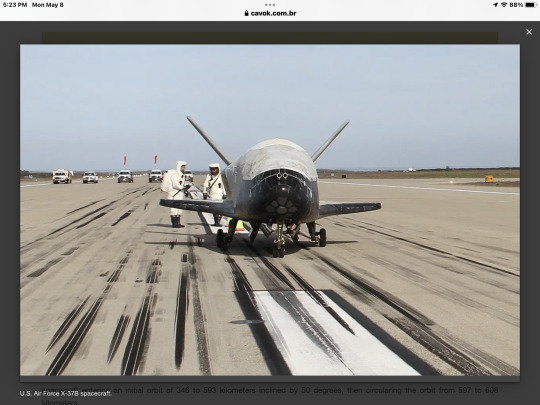
U.S. Air Force X-37B spacecraft.
This apparent second flight in the secret spacecraft differs from its first mission in 2020. This flight saw the space plane orbit for four days in an orbit of 331 to 347 kilometers inclined by 50 degrees. The recently completed mission lasted 276 days, with the spacecraft entering an initial orbit of 346 to 593 kilometers inclined by 50 degrees, then circularing the orbit from 597 to 608 kilometers.
The spacecraft performed numerous small and much larger orbital maneuvers during its flight, with adjustments made in recent weeks in preparation for landing.

The mysterious track near Lop Nor. (Photo: 2020 PLANET LABS)
It is likely that the landing took place at the military base of Lop Nur, in Xinjiang. Information about the spacecraft's orbit suggests that an orbital trail over the installation around 0020 UTC provided the opportunity for landing, according to Jonathan McDowell, astrophysicist and spaceflight activity tracker.
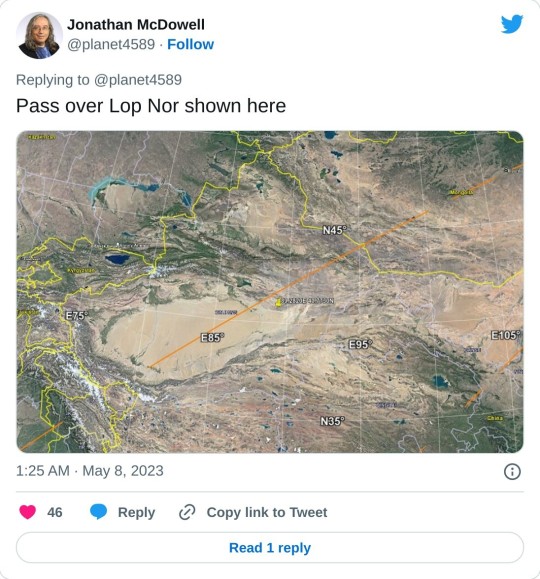
An image of an Umbra synthetic aperture radar satellite suggests recent activity at the Lop Nur site.

China has released little information about the project. The size and mass of the spacecraft are, however, limited by the use of the Long March 2F rocket, which can transport just over 8 tons to low Earth orbit.
Clues about the dimensions and shape of the ship appeared soon after launch, when apparent images of the cargo fairing for the mission appeared online.
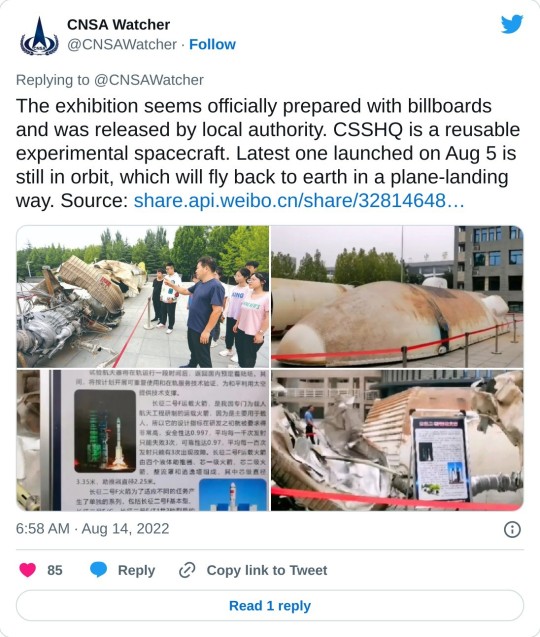
The spacecraft seems to be related to the development of an orbital segment of a two-stage space transport system for fully reusable orbit. A suborbital segment - with vertical takeoff and horizontal landing - had a second flight in September 2022.
The CASC reusable space plane project last year obtained national funding from the China Natural Sciences Foundation.
CASIC, a giant sister defense and space contractor, is working on her own space plane, called Tengyun.
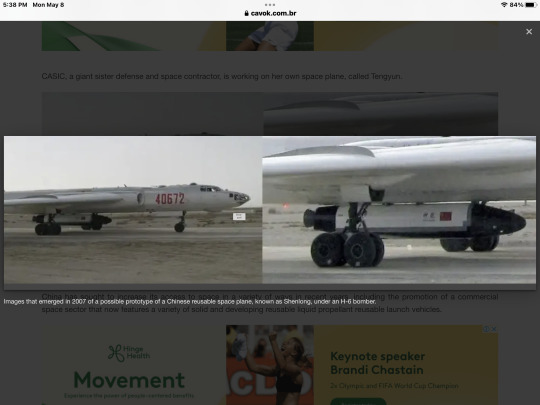
Images that emerged in 2007 of a possible prototype of a Chinese reusable space plane, known as Shenlong, under an H-6 bomber.
Meanwhile, a trading company called Space Transportation raised more than $46.3 million for its hypersonic spacecraft plans in 2021. Several Chinese rocket companies have also created presentations, including small space planes launched on liquid rocket concepts.
China has sought to increase its access to space in a variety of ways in recent years, including the promotion of a commercial space sector that now features a variety of solid and developing reusable liquid propellant reusable launch vehicles.
CASC, the country's main space contractor, is developing new super-heavy reusable launch vehicles that allow the country to try to land astronauts on the moon and a eventually fully reusable rocket to conduct large-scale space infrastructure missions.
Tags: ChinaSpace
Fernando Valduga
Fernando Valduga
Aviation photographer and pilot since 1992, has participated in several events and air operations, such as Cruzex, AirVenture, Daytona Airshow and FIDAE. He has works published in specialized aviation magazines in Brazil and abroad. Uses Canon equipment during his photographic work around the world of aviation.
Related news
COMMERCIAL
Russia continues to work on components for CR929
05/03/2023 - 11:00
SPACE
ViaSat-3 Americas is successfully launched
05/03/2023 - 06:00
SPACE
Virgin Galactic concludes gliding flight from Spaceport America
04/30/2023 - 11:20
HNA signed a contract for 60 single-aisle passenger jets C919 (photo) and 40 regional ARJ21 jets yesterday in Shanghai.
COMMERCIAL
COMAC sells 100 aircraft to Chinese airline
28/04/2023 - 10:00
SPACE
SpaceX tries again today the first launch of Starship
04/20/2023 - 09:00
SPACE
SpaceX aborts launch of the Starship rocket with a few minutes left
04/17/2023 - 19:25
homeMain PageEditorialsINFORMATIONeventsCooperateSpecialitiesadvertiseabout
Cavok Brazil - Digital Tchê Web Creation
Commercial
Executive
Helicopters
HISTORY
Military
Brazilian Air Force
Space
Specialities
Cavok Brazil - Digital Tchê Web Creation
4 notes
·
View notes
Text

SHUTTLE FERRY! If weather conditions are favorable, returning Space Shuttles land at Kennedy Space Center. Florida storms, however, frequently divert the shuttle to Edwards Air Force Base in California. The shuttle then hitches a ride back to Florida on one of two commercial Boeing 747 airplanes modified for space shuttle piggybacking. Officially called shuttle carrier aircraft, the planes are bolstered with struts, stabilizers, and electronic monitors. Photograph courtesy NASA/Carla Thomas

DISCOVERY LIFTOFF! U.S. Space Shuttle Discovery blasts off from NASA's Kennedy Space Center in Florida, heading for the International Space Station. The world's first reusable spacecraft, the space shuttle launches like a rocket, maneuvers in orbit like a spacecraft, and lands like an airplane. There are three shuttles now in operation: Discovery, Atlantis, and Endeavour. Photograph courtesy NASA

ATLANTIS LIFTOFF! Observers watch as Space Shuttle Atlantis launches on a mission to deliver a new segment of the International Space Station's backbone, known as the truss, to the orbiting laboratory. The shuttle has the most reliable launch record of any rocket now in operation. Since 1981, it has boosted more than 3 million pounds (1.36 million kilograms) of cargo into orbit. Photograph courtesy NASA/Jim Grossmann

SPACE SHUTTLE ATLANTIS! Space Shuttle Atlantis takes flight on December 2, 1988, reaching a speed of over 17,000 miles an hour (27,000 kilometers an hour) in just 8.5 minutes. It will need such a velocity to defeat gravity and stay within the launch window—the time or set of times during a given day that the shuttle can launch, still meet mission objectives, and stay within safety guidelines. Photograph courtesy NASA

CHALLENGER EXPLOSION! On January 28, 1986, about 76 seconds into its launch, fragments of Space Shuttle Challenger are seen tumbling against a background of fire, smoke, and vaporized propellants. The left solid rocket booster continues to fly, still thrusting. Later investigations found that faulty O-rings were to blame for the accident, in which all seven crew members died. It was the first such tragedy in shuttle history. Photograph courtesy NASA

ATLANTIS AND MIR! On June 29, 1995, Atlantis became the First Space Shuttle to dock at Russia's Mir space station. A Russian Mir-19 cosmonaut snapped this photo on July 4 after a brief scientific joyride on the Soyuz Spacecraft. This mission, STS-71, had a number of additional historic firsts: It was the hundredth U.S. human space launch conducted from Cape Canaveral, Florida, and it included the largest spacewalk ever undertaken in orbit and the first on-orbit change of shuttle crew. Photograph courtesy NASA

DISCOVERY ROLL-OUT! Carrying Discovery, NASA's crawler transporter creeps along at 1 mile an hour (1.6 kilometers an hour). The trip from the Vehicle Assembly Building to the launchpad takes about five hours, and the crawler burns about 150 gallons (570 liters) of diesel fuel every mile. Photograph courtesy NASA

SHUTTLE LANDING! Space Shuttle Discovery touches down at the Shuttle Landing Facility at NASA's Kennedy Space Center in Florida. The runway is 15,000 feet (4,600 meters) long and 300 feet (90 meters) wide, about twice the size of the average commercial runway. The pavement is made of 16-inch-thick (41-centimeter-thick), high-friction concrete grooved to drain water and add extra friction. Scientists went a little overboard with the friction at first and had to grind down the pavement a bit after several complicated landings. Photograph courtesy NASA

COLUMBIA LAUNCH! Space Shuttle Columbia, seen here launching in 1993, paved a brilliant legacy before its tragic end. The shuttle disintegrated over east Texas on its landing descent to Kennedy Space Center on February 1, 2003, at the conclusion of a microgravity research mission. Columbia was the oldest orbiter in the fleet and the first shuttle to orbit Earth. It was also the heaviest, weighing 178,000 pounds (80,800 kilograms). Photograph courtesy NASA

ENDEAVOUR LAUNCH! Framed by billowing clouds of smoke, the Space Shuttle Endeavour launches at night on March 11, 2008, headed for the International Space Station. During the more than two-week trip, astronauts conducted spacewalks and started the installation of a modular laboratory. The mission, STS-123, was NASA's 122nd space shuttle mission. Photograph by Susan Poulton
#National Aeronautics and Space Administration (NASA)#Kennedy Space Center | Florida | United States 🇺🇸#Edwards Air Force Base | California | United States 🇺🇸#Space Shuttle Discovery#Discovery | Atlantis | Endeavour#Space Shuttle Atlantis#Space Shuttle Challenger#Russia's Mir Space Station.#First Space Shuttle#Russian Mir-19#Soyuz Spacecraft.#Cape Canaveral | Florida | United States 🇺🇸#Space Shuttle Columbia#Space Shuttle Endeavour#Russia 🇷🇺#Miscellaneous Photographs
8 notes
·
View notes
Text
Rough traffic capacity calculations

Estimate the capacity of this segment of road in Bluey-Brisbane.
Assume reaction time of dog-people drivers = 2 seconds, similar to humans.
Maximum vehicle capacity per travel lane per hour: 3600 seconds per hour / 2 sec spacing = max capacity of 1800 vehicles per hour per lane (vphpl)…
(The capacity of a segment of roadway often is much lower (<1000 vphpl) in areas with closely spaced signals, many access/egress points, etc. like in a downtown or commercial area, and on the other hand, higher than 1800 on highways… sometimes values as high as 2200 vphpl are used in transportation modelling.)
Multiply lane capacity x 3 lanes (as shown here) => 3 x 1800 = 5400 veh /hr
If we assume there is also a corridor in the opposite direction off-camera, that’s 2x5400 = so potentially 10,800 vehicles through here in an hour. (This is likely a high figure, would need more data on typical traffic planned for this corridor.)
If we assume this is the AM peak hour, we can factor the AM peak up to a 24 hour volume (factors of 10x to 14x are typical rule of thumb, use 12x)
12 x 10,800 = 129,600 vehicles/weekday.
Actual “real life” volumes are going to be lower than this, this is just a theoretical calculation of maximum capacity. A major highway in a city might handle such a high volume as this.
3 notes
·
View notes
Text
Energy Portfolio Management Market In-Depth Analysis, Growth Strategies and Comprehensive Forecast to 2022 - 2032
In 2022, it is anticipated that the global market for energy portfolio management will be worth US$ 3,579 Million. The increased use of smart grid technology and smart metres is essential for raising market value. The entire demand for energy portfolio management is anticipated to reach around 11,569 Million by 2032, growing at a CAGR of 12.4% between 2022 and 2032.
The worldwide energy portfolio the board market is supposed to be esteemed at US$ 3,579 Million out of 2022. The developing reception of savvy meters and shrewd framework assume an essential part in upgrading the market esteem. The general interest for energy portfolio the board is projected to develop at a CAGR of 12.4% somewhere in the range of 2022 and 2032, adding up to around 11,569 Million by 2032
Download Sample Copy of Report @
https://www.futuremarketinsights.com/reports/sample/rep-gb-5537
Energy Portfolio Management Market: Drivers and Restraints
Owing to increasing awareness about energy management, coupled with the company are focussing on gaining carbon credits, which is together anticipated to drive the demand for Energy Portfolio Management solution. Further owing to strict government regulation on limiting the wastage of energy and to promote efficient energy management is the drivers piloting the growth of the market, during the forecast period.
The need for reduce the excessive consumption of energy, energy management and monitoring are the two major factor, which are into consideration by government, with increasing demand for energy monitoring system at industrial and residential sector are crucial factors driving the growth of noise monitoring device market. However, the lack enforcement of proper law implementation in emerging economies are the major factor restraining the growth of the energy portfolio management market.
Competitive Landscape
What are the Leading Players in the Energy Portfolio Management Market Up to?
In January 2022, Power management company Eaton Corporation PLC announced it has completed the acquisition of Royal Power Solutions, a U.S.-based manufacturer of high-precision electrical connectivity components used in an electric vehicle, energy management, industrial, and mobility markets. Under the terms of the agreement, Eaton paid $600 million for Royal Power Solutions, which represents approximately 13.6 times the company’s estimated 2022 EBITDA.
In November 2021, ABB Power Products & Systems India announced its rebranding as Hitachi Energy India Ltd. to accelerate the clean energy transition in India. Hitachi Energy, which has focused its purpose on ‘advancing a sustainable energy future for all, views India among its top five markets for expansion.
In June 2022, Siemens further expanded its portfolio in the field of innovative predictive maintenance and asset intelligence with the acquisition of Senseye. The global industrial analytics software company is headquartered in Southampton, UK.
Ask an Analyst @
https://www.futuremarketinsights.com/ask-question/rep-gb-5537
Key Companies Profiled
Eaton Corporation PLC
ABB Ltd.
Siemens AG
Schneider Electric
International Business Machines Corporation
C.A Technologies
SAP SE
Emerson Electric Co.
Honeywell International Inc.
Watchwire
Key Segments Covered In The Energy Portfolio Management Industry Analysis
Energy Portfolio Management Market by End User:
Residential
Industrial
Commercial
Energy Portfolio Management Market by Deployment:
Cloud
On-premises
Energy Portfolio Management Market by Region:
North America Energy Portfolio Management Market
Latin America Energy Portfolio Management Market
Europe Energy Portfolio Management Market
Asia Pacific Energy Portfolio Management Market
The Middle East & Africa Energy Portfolio Management Market
Request Methodology @
https://www.futuremarketinsights.com/request-report-methodology/rep-gb-5537
2 notes
·
View notes
Text
Drone Package Delivery Market Are Estimated To Increase During Period 2029 USD 31,188.7 Million At Exhibiting a CAGR of 53.94%
The global drone package delivery market size is projected to reach USD 7,388.2 million by 2028, exhibiting a CAGR of 41.8% during the forecast period. Widespread deployment of drones to deliver medical and food supplies amid the COVID-19 pandemic is expected to aid the market make substantial gains, observes Fortune Business Insights™ in its report, titled “Drone Package Delivery Market Size, Share & Industry Analysis, By Type (Fixed Wing and Rotary Wing), By Package Size (Less Than 2 Kg, 2-5 Kg, and above 5 Kg), By End Use (Restaurant & Food Supply, E-commerce, Healthcare, Retail Logistics & Transportation and others), and Regional Forecast, 2020-2028”.
Get Sample PDF Brochure:
The report states that the market value stood at USD 642.4 million in 2019 and shares the following information:
Comprehensive depiction of the industry outlook and trends;
Detailed insights into the upcoming opportunities in the market;
Tangible analysis of the market drivers, restrains, and all possible segments; and
In-depth assessment of the regional and competitive dynamics impacting the market.
Driving Factor
Emergence of Drone Startups in Logistics to Augment Market Potential
The growing demand for enhancing the efficiency of logistics operations has triggered a sudden emergence of startups specializing in drone technologies to cater to these needs. For example, DroneScan, a South Africa-based startup, designs drones that transmits live data of scanned items in warehouses, making inventory management more efficient and upping the productivity quotient of workers. An Italy-based startup, Archon, provides autonomous robotic drone services to facilitate supervised as well as unsupervised inspection of warehousing and logistics operations. The drone startup culture is gathering momentum in developing countries as well. For example, in India, several startups have spawned in the past few years that are providing next-gen drone services. Aarav Unmanned Systems, for instance, was started in 2013 and is India’s first drone company to develop drone solutions for commercial applications in the public and private sectors. These developments are expected to power the drone package delivery market growth in the forthcoming years.
Regional Insights
North America to Top Other Regions Backed by Rising Preference for Drone Deliveries by Shoppers
North America is set to dominate the drone package delivery market share during the forecast period owing to the increasing inclination of online shoppers towards delivery of goods through unmanned aerial vehicles (UAVs). With a market size of USD 237.7 million in 2019, the region is likely to retain its leading position, which will be supported by the strong financial support to drone startups in the US and Canada.
In Europe, the market is anticipated to be driven by the growing presence of tech companies that are expanding their operations in the region through collaborations and partnerships. Asia Pacific is expected to create exciting opportunities for market players on account of the emerging trend of online purchasing of groceries in the large cities of India, China, and Indonesia.
Competitive Landscape
Supportive Regulations to Novel Ideas to Feed Competitive Ardor of Key Players
With the scope for innovation widening, key players in the market drone package deliveries are engaged in coming up with novel drone solutions, especially during the current coronavirus crisis. Supporting their efforts are regulatory bodies that are easing flying norms and rules to ensure timely delivery of essential supplies to people.
List of Key Companies Profiled in the Drone Package Delivery Market Report:
DroneScan (South Africa)
Cheetah Logistics Technology (US)
Flytrex (Israel)
Flirtey (US)
Matternet, Inc. (US)
Boeing (US)
Amazon Inc. (US)
Wing Aviation LLC (US)
Workhorse Group Inc. (US)
Drone Delivery Canada Corp. (Canada)
Zipline (US)
DHL International GmbH (Germany)
United Parcel Service of America, Inc. (US)
FedEx (US)
Industry Developments:
August 2020: Amazon secured clearance from the Federal Aviation Administration (FAA) to deploy its Prime Air delivery drone fleet to efficiently and securely deliver packages to customers. Amazon is now the third company to receive FAA approval to operate drones on a commercial scale after UPS and the Alphabet-owned company, Wing.
May 2020: Wing, a subsidiary of Google’s parent company Alphabet, announced that it has made thousands of drone deliveries in Australia during the pandemic. Launched in Canberra in 2019, the demand for Wing’s services rose by 500% between February and April 2020.
2 notes
·
View notes
Text
Superior Lubricant Oil Company Produced by Velvex
India is the world’s third-largest lubricant market, next only to the US and China, ahead of Japan, Russia, and Brazil, with a total consumption of approximately 2.4 billion liters.
The Indian lubricants market remains one of the growth prospects in an otherwise flat global market; however, it has its challenges. The year 2019 was significant for the Indian economy; however, the slowdown in the global economy has caught up with the Indian economy, as it consistently registered downward revisions in its economic outlook. This directly impacted automobile production, with the most severe shrinkage, observed in commercial vehicles production. This immediately impacted first-fill demand; a cascading effect on the service-fill market is anticipated.
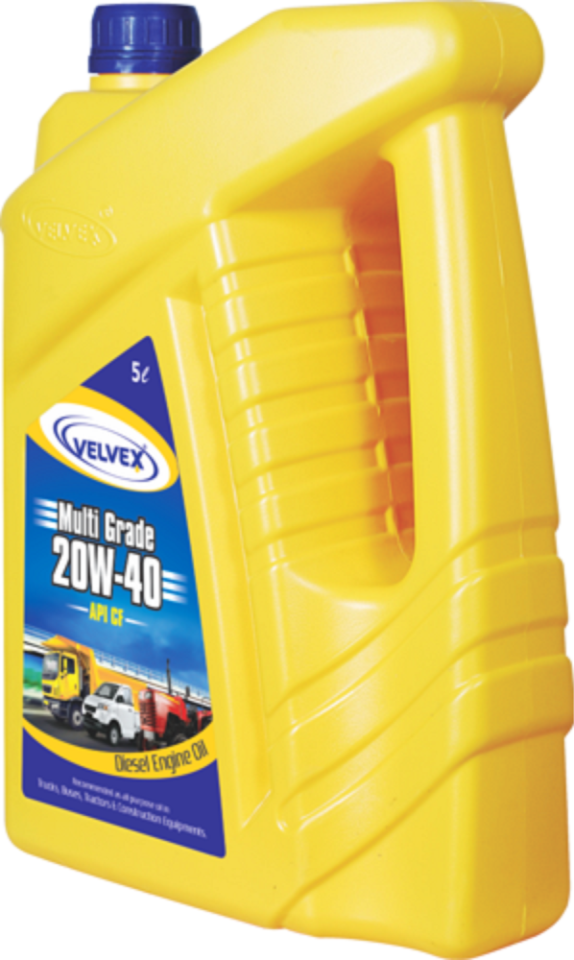
Velvex formed by the Nandan group of companies is the fastest growing Lubricants oil company that provides petroleum derivatives, and food products catering to multi-disciplinary industries. The Nandan group of companies works with a mission to provide quality products and services to the customers through efficient systems. The group works with a vision to become leaders in manufacturing genuine oils, greases, and specialty oils with a momentous presence in the industry.
About Us :
Velvex formed by the Nandan group of companies is the fastest growing company that provides lubricants, petroleum derivatives, and food products catering to multi-disciplinary industries. The Nandan group of companies works with a mission to provide quality products and services to the customers through efficient systems. The group works with a vision to become leaders in manufacturing genuine oils, greases, and specialty oils with a momentous presence in the industry. The group works enthusiastically to bring change in the oil sector by ensuring growth and progress with growing time. The group works to provide innovative ways to enhance the stockholder values and create growth opportunities for the employees. The NPL BlueSky has been awarded as the supplier of the year by the TATA MOTORS in the Annual Vendor meet for the year 2018-2019. Winning many accolades Nandan group of companies works towards building a positive future. It is one of the oldest and the largest contract blending and filling specialists in India.
The Overview Of Lubricant Or Engine Oil Companies In The Perspective Of India :
India is the world’s third-largest lubricant market, next only to the US and China, ahead of Japan, Russia, and Brazil, with a total consumption of approximately 2.4 billion liters.

The Indian lubricants market remains one of the growth prospects in an otherwise flat global market; however, it has its challenges. The year 2019 was significant for the Indian economy; however, the slowdown in the global economy has caught up with the Indian economy, as it consistently registered downward revisions in its economic outlook. This directly impacted automobile production, with the most severe shrinkage, observed in commercial vehicles production. This immediately impacted first-fill demand; a cascading effect on the service-fill market is anticipated.
The Indian lubricant market is fiercely competitive, characterized by the presence of nationalized oil companies (NOC) such as Hindustan Petroleum (HPCL), Indian Oil (IOCL), and Bharat Petroleum (BPCL); international lubricant marketers such as Shell, Valvoline, Total, and ExxonMobil; and, homegrown marketers including Gulf Oil, Raj Petro, Savita, Columbia, and Apar falls under top 20 lubricant companies in India. Over the past five to six years, HPCL has swiftly expanded its market share in addition to lubricants and the process oil segment over the past five to six years.
Contact Us Today :
Address : C-201, Lotus corporate park, Ram Mandir Lane, Jay coach junction, Western express highway, Goregaon east, Mumbai - 400063
Contact Info : +91-22-42577200
Facebook : https://www.facebook.com/Velvex.in/
Twitter : https://twitter.com/velvex_in/
Linkedin : https://in.linkedin.com/company/velvexmotoroil
Instagram : https://www.instagram.com/velvex.in/?hl=en
Website : https://www.velvex.in/

#engine oil manufacturers#lubricant manufacturers#Lubricant Suppliers#lubricant oil#bike engine oil#engine oil for bike
2 notes
·
View notes
Text
Transparent Display Market - Forecast (2022 - 2027)
Transparent Displays Market size is forecast to reach $7.9 billion by 2026, at a CAGR of 44.9% during 2021-2026. Growing demand for liquid crystal display based transparent displays for various verticals, increasing usage of transparent display for Head-Mounted Display (HMDs), and Head-Mounted Display products is analyzed to enhance the Transparent Display market share. In addition high growth for OLED based transparent display devices and high adoption of transparent display for digital signage products are expected to create significant growth opportunities for players in the market during the forecast period. In 2020, JDI developed transparent display with 87% high transparency, which is nearly the same as looking through a clear glass when the display is turned off. In 2020, Panasonic has released commercial 55-inch transparent self-illuminating transparent OLED display panel that does not require a backlight. Hence these developments are analyzed to drive the Transparent Display industry in the forecast period 2021-2026.

Report Coverage
The report: “Transparent Displays Market Report– Forecast (2021-2026)”,by IndustryARC covers an in-depth analysis of the following segments of the Transparent Display market
By Type: LCD, OLED, E-Paper, Others
By Product: HMD, HUD, Digital Signage, Smart Appliance
By Display Size: Small, Medium, and Large
By Resolution: HD, Full HD, UHD, Others
By End User: Industrial, Retail and hospitality, Automotive, Aerospace and defense, Transportation, Healthcare, Sports and entertainment, others.
By Geography: North America (U.S, Canada, Mexico), South America(Brazil, Argentina and others), Europe(Germany, UK, France, Italy, Spain, Russia and Others), APAC(China, Japan India, SK, Aus and Others), and RoW (Middle East and Africa)
Request Sample
Key Takeaways
Transparent Display market in APAC region held a significant market share of 39.2% in 2020, due to the increase in demand for transparent displays in various end users, such as automotive, Electronics, healthcare.
OLED segment has held significant share of 38% in 2020, rise in demand for OLED display technology due to advantages such as improved image quality, better contrast, higher brightness and much faster refresh rates with lower power consumption as compared to liquid crystal display technology is analyzed to drive the market growth.
High adoption of transparent display for digital signage products is analysed to drive the market growth.
Healthcare sector in Transparent Display Market is expected to witness a highest CAGR of 45.8% the forecast period. Increasing technological advancements in the healthcare industry is paving the way for the use of transparent displays in applications, such as surgery and patient check-up.
Transparent Display Market Segment Analysis - By Type
OLED segment has held significant share of 38.2% in 2020, rise in demand for OLED display technology due to advantages such as improved image quality, better contrast, higher brightness and much faster refresh rates with lower power consumption as compared to liquid crystal display technology is analysed to drive the market growth. Transparent OLED maximizes the advantages of OLED and can be used in various places from stores to autonomous vehicles. Moreover several companies have been launching advanced transparent OLED displays to gain the market traction. In 2021, LG Display has announced its plans to launch its transparent OLED screen. In 2020, Panasonic has released commercial 55-inch transparent self-illuminating transparent OLED display panel that does not require a backlight Hence, OLED display technology expected to provide ample opportunities for the transparent display market during the forecast period 2021-2026.
Inquiry Before Buying
Transparent Display Market Segment Analysis - By End User
Healthcare sector in Transparent Display Market is expected to witness a highest CAGR of 45.8% in the forecast period. Increasing technological advancements in the healthcare industry is paving the way for the use of transparent displays in applications, such as surgery and patient checkup. Transparent displays are being deployed to assist surgeons during critical operations. In addition, the healthcare industry is exhibiting a substantial growth Y-o-Y, moreover several companies and research institutes are developing these displays for various applications. In 2021, Industrial Technology Research Institute (ITRI) has developed a transparent display surgical navigation system that can reduce the risk of surgery. This system provides high accuracy direct view type virtual-real fusion image information to meet the needs of preoperative communication and intraoperative navigation. In addition this can also be used in medical teaching and smart surgery in the future. Similarly, Companies such as LG, Planar and other are providing digital signage and display technology for the healthcare industry ranges across applications in hospitals and medical offices abound. Hence these global trends are analyzed to create demand for Transparent Display industry in the forecast period 2021-2026.
Transparent Display Market Segment Analysis - By Geography
Transparent Display market in APAC region held significant market share of 39.2% in 2020, due to the increase in demand for transparent displays in various end users, such as automotive, Electronics, healthcare and so on is driving the market growth. In addition, high demand for transparent display panels in South Korea, China, and Japan is a major contributor to the growth of the market. The presence of display panel manufacturers gives it a prime benefit of adopting the latest technology-based display devices, which provides ample opportunities to the transparent display market. In 2019, LG Electronics Inc. completed the construction of its new transparent OLED screen production plant in China. This would extensively increase the production of transparent OLED screens, in display sizes of 55 inches and above, by 60,000 units per month. In 2020, Chinese electronics company Xiaomi has launched Mi TV LUX an edge-to-edge transparent display. Hence these factors are analyzed to drive the transparent display industry outlook.
Schedule a Call
Transparent Display Market Drivers
Growing number of product launches with advancements is analyzed to drive the market.
Transparent displays are expected to change the way of using displays as this technology helps in displaying or transferring information. Many companies are investing in huge amount in R&D activities of transparent display technology. For instance, Samsung to launch a new triple foldable tablet and a transparent display phone in 2021. Similarly in 2021, Crystal Display Systems are planning to introduce the curved transparent liquid crystal display for retail displays that really give that unique edge that stand out from the usual displays. Japanese scientists invented intelligent glasses that remembers the place where people saw their keys, mobiles, and other things for the last time. Moreover, emergence of virtual reality devices compatible with smartphones supplements growth of this market. Furthermore, increasing awareness and adoption of advanced technologies are the factors that drive transparent display market share in the forecast period 2021-2026.
Miniaturization of Electronic Devices Drives the Need and Development of Transparent Display Technologies
These days, advanced technologies are growing faster where in each technology is renewed with implementation of new one. The transparent display came to solve major problems related to the device miniaturization. This lack of space on screen-based displays provide an opportunity for the development of transparent displays. The growth in transparent display market can be attributed to presence of major manufacturers and increasing R&D investments towards technology and product development by research universities and major manufacturers. In 2019, Samsung has announced to invest $11 Billion into Next-Generation Displays. Similarly LG has committed to invest heavily for the development of this technology. Hence these investments are analyzed to provide opportunities for the Transparent Display market in the forecast period 2021-2026.
Transparent Display Market Challenges
High Capital Investment Required for the Development of Transparent Displays
Although Transparent Display market is analyzed to grow at a significant rate, the high initial investments required for the R&D of this technology is set to hamper the growth of the market. The competitive display technology segment, new functionalities will increase the cost of development of the products related to this technology. On the other hand most of the technologies required for the outward of transparent display are in development stage only. The high initial investments and slow development process will hinder the Transparent Display market size in the forecast period.
Buy Now
Transparent Display Market Landscape
Product launches, acquisitions, Partnerships and R&D activities are key strategies adopted by players in the Transparent Display market. Transparent Display top 10 companies include Apple, Inc., AU Optronics Corp., Google, Inc., LG Electronics, Samsung Electronics, UDC Corp., Panasonic Corp., Sony Corp, Pioneer and Philips Corp. among others.
Acquisitions/Product Launches
In 2020, Panasonic has released 55-inch transparent OLED display module. The new Panasonic product uses a self-illuminating transparent OLED display panel that does not require a backlight.
In 2020, LG has partnered with Assa Abloy to supply transparent OLED automatic doors.
For more Electronics related reports, please click here
#Transparent Display Market#Transparent Display Market Size#Transparent Display Industry#Transparent Display Market Share#Transparent Display Market Report#Transparent Display Industry Outlook#Transparent Display#Display
2 notes
·
View notes
Text
Padmini VNA Mechatronics Pvt Ltd - State of the art Manufacturing Facility Tour
Founded in 1991, the company has been demonstrating a wide range of high efficiency components for passenger cars, commercial vehicles, two wheelers, three wheelers and tractor segment, boosting the fuel economy of modern automobiles while maintaining safety and performance standards at the same time. These components include EGR valves, Throttle bodies, Vacuum modulation Valves, Pumps, Solenoid Valves, Electronics and Fuel system.
For more information visit our website: https://padminivna.com/ For more video you can visit our YouTube Channel: https://www.youtube.com/watch?v=wkUI0GefqFQ&t=43s
#automobile parts manufacturers#auto parts manufacturers#automobile parts manufacturing#automotive component manufacturers#autos#cars
2 notes
·
View notes
Text
Bioplastics Market Share, Size, Global Driving Factors by Manufacturers, Growth Opportunities
The global bioplastics market size was USD 10.64 Billion in 2021 and is expected to register a revenue CAGR of 16.8% over the forecast period, according to the latest analysis by Emergen Research. Increase in demand for bioplastics from the automotive industry and demand for compostable plastics to improve soil quality are factors expected to support revenue growth of the market between 2022 and 2030. The automotive industry's primary objective and challenge is to reduce fuel consumption and pollutants by reducing vehicle weight. Bioplastics are effective materials for achieving this purpose. These smart plastics, such as bio-PA and bio-PP, have been embraced by major vehicle manufacturers to reduce environmental impact and provide additional strength to automobile components. Thus, demand for these plastics in the automotive industry owing to their excellent properties is anticipated to create lucrative growth prospects for companies in the market.
Get a sample of the Bioplastics Market report @ https://www.emergenresearch.com/request-sample/169
The global Bioplastics market report covers the analysis of drivers, trends, limitations, restraints, and challenges arising in the Bioplastics market. The report also discusses the impact of various other market factors affecting the growth of the market across various segments and regions. The report segments the market on the basis of types, applications, and regions to impart a better understanding of the Bioplastics market.
Emergen Research has segmented the global Bioplastics market on the basis of type, platform, application, and region:
Type Outlook (Revenue, USD Billion; 2017-2027)
Biodegradable
Polybutylene Adipate Terephthalate (PBAT)
Polybutylene Succinate (PBS)
Polylactic Acid (PLA)
Polyhydroxyalkanoate (PHA)
Starch Blends
Others
Distribution Channel Outlook (Revenue, USD Billion; 2017-2027)
Online
Offline
Application Outlook (Revenue, USD Billion; 2017-2027)
Packaging
Textile
Automotive & Transportation
Consumer Goods
Agriculture
Building & Construction
Others
Request a discount on the Bioplastics Market report @ https://www.emergenresearch.com/request-discount/169
Based on the competitive landscape, the market report analyzes the key companies operating in the industry:
BASF SE, NatureWorks, Biome Plastics, Braskem, Biotec, Total Corbion, Plantic Technologies, Mitsubishi Chemical Holdings Corporation, Novamont SPA, and Toray Industries
Additionally, the report covers the analysis of the key players in the industry with a special focus on their global position, financial status, and their recent developments. Porter’s Five Forces Analysis and SWOT analysis have been covered by the report to provide relevant data on the competitive landscape.
How will this Report Benefit you?
An Emergen Research report of 250 pages contains 194 tables, 189 charts and graphics, and anyone who needs a comprehensive analysis of the global Bioplastics market, as well as commercial, in-depth analyses of the individual segments, will find the study useful. Our recent study allows you to assess the entire regional and global market for Bioplastics. In order to increase market share, obtain financial analysis of each segment and the whole market. Look at how you can utilize the current and potential revenue-generating opportunities available in this sector. We believe that there are significant prospects for energy storage technology in this industry due to the rapid expansion of the technology. In addition to helping you build growth strategies, improve competitor analysis, and increase business productivity, the research will also assist you in making better strategic decisions.
Detailed Regional Analysis covers:
North America (U.S., Canada)
Europe (U.K., Italy, Germany, France, Rest of EU)
Asia-Pacific (India, Japan, China, South Korea, Australia, Rest of APAC)
Latin America (Chile, Brazil, Argentina, Rest of Latin America)
Middle East & Africa (Saudi Arabia, U.A.E., South Africa, Rest of MEA)
To Study Full Bioplastics Market Report, click here @ https://www.emergenresearch.com/industry-report/bioplastics-market
What Questions Should You Ask before Buying a Market Research Report?
How is the Bioplastics market evolving?
What is driving and restraining the Bioplastics market?
How will each Bioplastics submarket segment grow over the forecast period and how much revenue will these submarkets account for in 2027?
How will the market shares for each Bioplastics submarket develop from 2020 to 2027?
What will be the main driver for the overall market from 2020 to 2027?
Will leading Bioplastics markets broadly follow the macroeconomic dynamics, or will individual national markets outperform others?
How will the market shares of the national markets change by 2027 and which geographical region will lead the market in 2027?
Who are the leading players and what are their prospects over the forecast period?
What are the Bioplastics projects for these leading companies?
How will the industry evolve during the period between 2020 and 2027? What are the implications of Bioplastics projects taking place now and over the next 10 years?
Is there a greater need for product commercialisation to further scale the Bioplastics market?
Where is the Bioplastics market heading and how can you ensure you are at the forefront of the market?
What are the best investment options for new product and service lines?
What are the key prospects for moving companies into a new growth path and C-suite?
Request customization on the report @ https://www.emergenresearch.com/request-for-customization/169
Thank you for reading our report. To know more about the customization of the report, please get in touch with us, and our team will ensure the report is suited to your requirements.
About Us:
Emergen Research is a market research and consulting company that provides syndicated research reports, customized research reports, and consulting services. Our solutions purely focus on your purpose to locate, target, and analyse consumer behavior shifts across demographics, across industries, and help clients make smarter business decisions. We offer market intelligence studies ensuring relevant and fact-based research across multiple industries, including Healthcare, Touch Points, Chemicals, Types, and Energy. We consistently update our research offerings to ensure our clients are aware of the latest trends existent in the market. Emergen Research has a strong base of experienced analysts from varied areas of expertise. Our industry experience and ability to develop a concrete solution to any research problems provides our clients with the ability to secure an edge over their respective competitors.
For More Related Reports by Emergen Research
gambling software market: https://www.emergenresearch.com/industry-report/gambling-software-market
functional ingredients market: https://www.emergenresearch.com/industry-report/functional-ingredients-market
space mining market: https://www.emergenresearch.com/industry-report/space-mining-market
acrylic resins market: https://www.emergenresearch.com/industry-report/acrylic-resins-market
drone logistics and transportation market: https://www.emergenresearch.com/industry-report/drone-logistics-and-transportation-market
targeted therapeutics market: https://www.emergenresearch.com/industry-report/targeted-therapeutics-market
airborne intelligence surveillance and reconnaissance market: https://www.emergenresearch.com/industry-report/airborne-intelligence-surveillance-and-reconnaissance-market
small caliber ammunition market: https://www.emergenresearch.com/industry-report/small-caliber-ammunition-market
1 note
·
View note